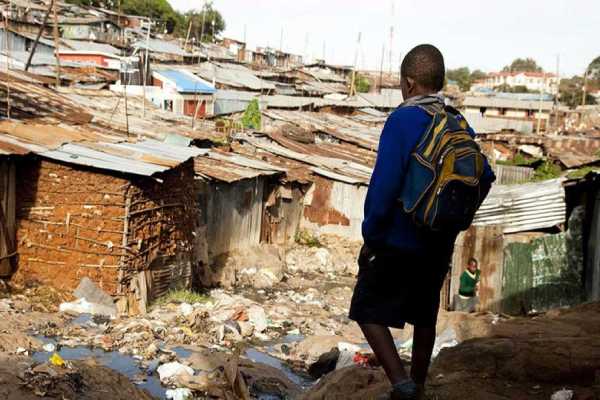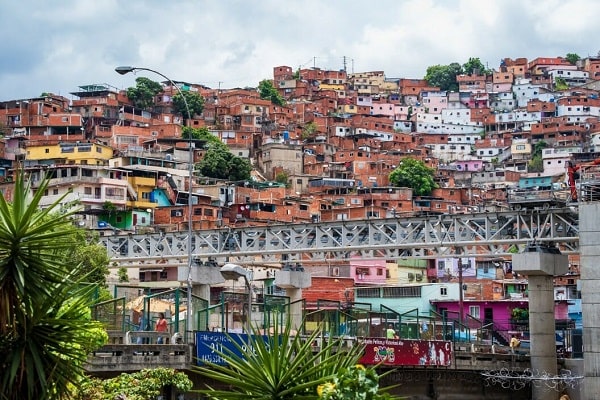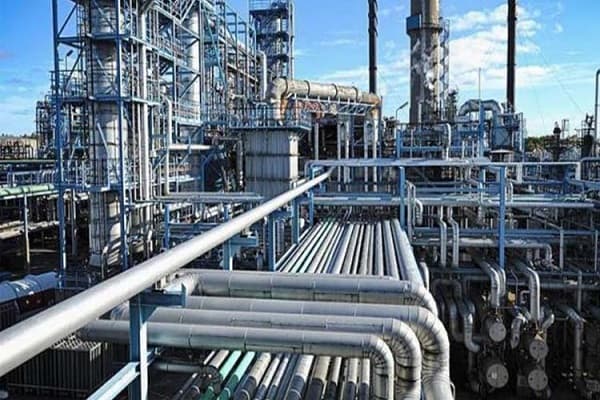Poorest Countries in the World 2024: Updated List
Every year the International Monetary Fund (IMF) publishes a list of the poorest countries in the world, considering their GDP per capita.
In 2023, the ten poorest countries in the world are all located on the African continent with GDP per capita below US$ 1 thousand in some of them.

What are the poorest countries in the world?
The poorest countries in the world are those that have the lowest GDP per capita which is calculated using the Purchasing Power Parity (PPP) methodology. See below the lowest GDPs in the world:
- Burundi – €233
- South Sudan – $219.99
- Somalia – $1,185.56
- Malawi – $1,005
- Central African Republic – $1,013
- Democratic Republic of the Congo – $1,132
- Mozambique US$ 1,293
- Niger – US$1,320
- Liberia – $1,602
- Chad – $1,621
The International Monetary Fund (IMF) provides information on the highest and lowest GDPs in the world.
It is worth mentioning that the PPC methodology is more effective than the nominal GDP one, as it shows the relative cost of living plus inflation rates instead of considering only exchange rates.
For the calculation, the currency used is the international dollar, and the value is how much each inhabitant would have if the wealth generated were distributed equally among people. So, the 10 poorest countries in the world are:
1. Burundi
Burundi is considered one of the poorest countries in the world due to a combination of factors such as a lack of natural resources, ethnic and political conflicts, and an underdeveloped industrial sector. In terms of GDP per capita, Burundi occupies the last position, with a value of only 233 euros per capita, that is, the average annual income per person is very low.
In addition, the country has low social indicators, such as an HDI of 0.423, life expectancy of 60.90 years and average schooling of 3 years.
Political instability and ethnic and local conflicts are also factors that contribute to the country’s poverty, causing hundreds of thousands of deaths and refugees. According to the Datosmacro website, the country has the lowest GDP per capita of the 196 countries evaluated, with only 187 euros per capita.
In short, the combination of low income, precarious social indicators, ethnic and political conflicts and an underdeveloped industrial sector make Burundi the poorest country in the world in terms of GDP per capita.
2. South Sudan
South Sudan is one of the poorest countries in the world, with a per capita GDP of US$219.99, due to several factors including high infant mortality rates, poor health care and low levels of education. Despite being rich in oil, the country faces a series of economic and social challenges that affect the quality of life of its population.
The maternal mortality rate is the highest in the world, and most children in the country face precarious living conditions, with little medical and nutritional assistance.
In terms of health, South Sudan has one of the worst health systems in the world, with limited resources and a high rate of infectious and parasitic diseases. This is reflected in the country’s high infant mortality rates and relatively low average life expectancy. Furthermore, only 27% of the population over 15 years old can read and write, which contributes to a high illiteracy rate in the country.
Despite having large oil reserves, the lack of infrastructure and limitations in the economic sector prevent the country from fully using its natural resources for the benefit of its population. As a result, South Sudan has a very low per capita income compared to other countries, making it one of the poorest countries in the world.
3. Somalia
With a per capita GDP of US$1,185.56, more than two-thirds of Somalis live in extreme poverty and the country has one of the highest child mortality rates in the world. In addition, Somalia faces a serious humanitarian crisis, with emphasis on famine.
The country is marked by a long history of armed conflicts, which has lasted for decades and has resulted in an extremely weak infrastructure and a virtually non-existent State. These conflicts are compounded by the presence of terrorist groups and the lack of a strong central government.
Despite the natural riches, such as minerals and fishing, Somalia faces difficulties in exploiting them due to the context of violence and political instability. In addition, the country suffers from a lack of investment in education and health, which ends up limiting economic and social development.
4. Malawi
In fourth place among the poorest countries is Malawi in southeastern Africa, which also has a population concentrated in the rural sector. With high unemployment and rampant population growth, the country has a per capita income of just $1,005.
Malawi is considered one of the poorest countries in the world for several reasons. Its economy is based mainly on agriculture, which employs the majority of the population, but has low productivity and vulnerability to climatic factors, which can impact the country’s food and economic security.
In addition, the country’s health system is precarious, with only four reference hospitals to serve a population of around 18 million inhabitants, which represents a major challenge for the population’s access to health. All these factors contribute to a situation of great social and economic inequality in the country.
5. Central African Republic
The fifth poorest country in the world is the Central African Republic which borders Cameroon and five other countries. Most of the country is covered by savannas, and even though it has valuable mineral reserves of diamonds, oil, gold, uranium and wood, it has a GDP per capita of only US$ 1,013.
The Central African Republic is one of the poorest and most unstable countries in the world, with an economy based mainly on agriculture and diamond mining. The country has faced a serious humanitarian and security crisis since 2013, when a coup toppled then-president François Bozizé, leading to conflict between rival armed groups and a series of human rights violations.
Since then, the country has been in a state of continuous conflict, with frequent fighting between Seleka rebels and so-called Anti-balaka militias, drawn from the non-Muslim population, and soldiers from the regular armed forces. The civil war has caused great suffering, deaths and destruction of property.
Furthermore, the country’s socio-economic infrastructure, which was already weak, collapsed during the conflict, and basic social services are non-existent. For these reasons, the Central African Republic is considered one of the poorest and most dangerous countries in the world.
6. Democratic Republic of the Congo
In sixth place is the Democratic Republic of Congo, the second largest country in Africa. Many political conflicts for decades made residents flee to neighboring countries motivated by hunger. GDP per capita is $1,132.
The average income of the population is very low and socioeconomic inequality has worsened over time, with 63% of people living below the poverty line. In addition, the country has faced armed conflicts practically since its inception, which has caused political and social instability and damaged the country’s economy and infrastructure.
In 2018, the Democratic Republic of Congo had the third largest population of poor people in the world, with 73% of the Congolese population living in extreme poverty.
7. Mozambique
In seventh place is Mozambique, which is located in the southeast of Africa and borders six countries, including South Africa and Tanzania. The country, despite having numerous natural reserves, has experienced conflicts and is among the poorest countries in the world with a per capita GDP of US$ 1,293.
The Mozambican economy is still in a state of underdevelopment, with 43% of the population living in absolute poverty. Although the country is rich in natural resources, its economy is highly dependent on agriculture, which is vulnerable to adverse weather conditions such as droughts and floods. Furthermore, the industrial sector is still developing and the country’s infrastructure is limited.
Poverty in Mozambique is compounded by political, social and cultural factors. Mozambique was a Portuguese colony until 1975, when it became independent, and the country experienced a civil war from 1977 to 1992.
Political instability and violence negatively affected the country’s development and contributed to the lack of food and nutrition security, access limited to basic health and education services, as well as a lack of infrastructure.
8. Niger
In eighth place is Niger, which is located in West Africa, being the largest country in that region. About 80% of its territory is located in the Sahara desert. Approximately 70% of the population is illiterate and with inefficient agriculture and an unchecked growing population, the country has a GDP per capita of just US$1,320.
As a result, the majority of the country’s population lives in poverty, with around 60% below the poverty line. In addition, the country has one of the highest birth rates in the world, with women having an average of 7.6 children, resulting in a rapid population increase.
Other factors contributing to poverty in Niger include conflicts in neighboring countries, resulting in numerous refugees seeking shelter in the country. There is also a lack of access to basic resources such as water, food, education and sanitation, which further aggravates the poverty situation in the country.
Despite having natural reserves such as oil and uranium, Niger has not been able to develop these resources due to the lack of investments and infrastructure needed to exploit them effectively. As a result, the country continues to face a number of economic and social challenges that place it among the poorest countries in the world.
9. Liberia
Liberia is a West African country bordering the Atlantic Ocean. Even living in times of peace, the country still suffers the consequences of conflicts with a large part of the population living below the poverty line. Being the ninth poorest country in the world, its GDP per capita is US$ 1,602.
This country is in this situation due to prolonged civil strife, political and economic instability, corruption, lack of infrastructure and limited natural resources. Since the 1980s, the country has suffered from internal conflicts that have resulted in mass displacement, destruction of infrastructure and disruption of the local economy.
These conflicts have also led to a cycle of poverty and lack of access to basic health, education and sanitation services. Widespread corruption is also a serious problem, hampering the country’s economic and social development.
In addition, the lack of natural resources, low agricultural productivity and dependence on imports have made the country’s economy highly vulnerable. In terms of social indicators, Liberia has one of the worst Human Development Indexes (HDI) in the world, with an average life expectancy of just 64 years and a literacy rate of around 48%.
10. Chad
Finally, the tenth poorest country in the world is the Republic of Chad which is located in the center of the African continent.
Chad is considered one of the poorest countries in the world due to a combination of economic, social and political factors. About 80% of the population lives below the poverty line and more than 50% is illiterate. Despite being a major producer of oil and cotton, the country has a per capita GDP of just US$1,621 and faces high levels of corruption and political instability.
The country’s ethnic variety has also been a factor in internal conflicts. Furthermore, the lack of investments in infrastructure, health and education, along with challenges such as desertification, also contribute to Chad’s extreme poverty.
Read Also: The 25 Richest Countries In Europe
Was it possible to understand which are the poorest countries in the world? Then leave your comment, your suggestion and share this article with your friends on your social networks.



![The 10 Most Spoken Languages in Africa [Updated]](https://naijaxtreme.com/wp-content/uploads/2024/02/most-spoken-languages-in-africa_1.jpg)



